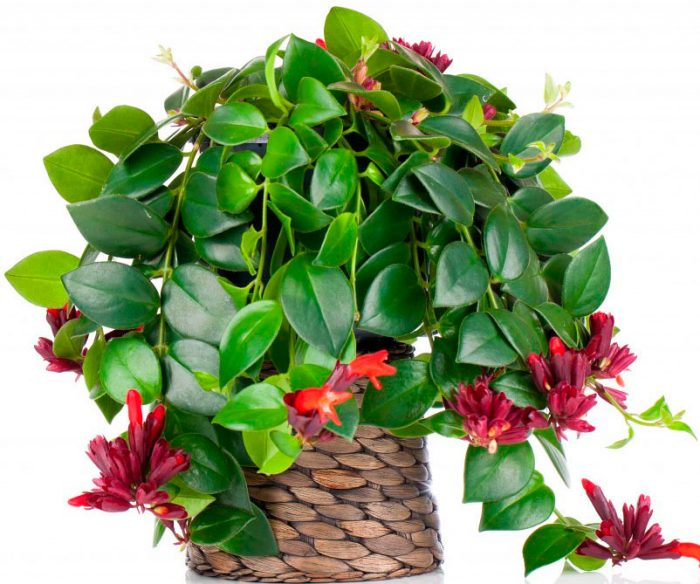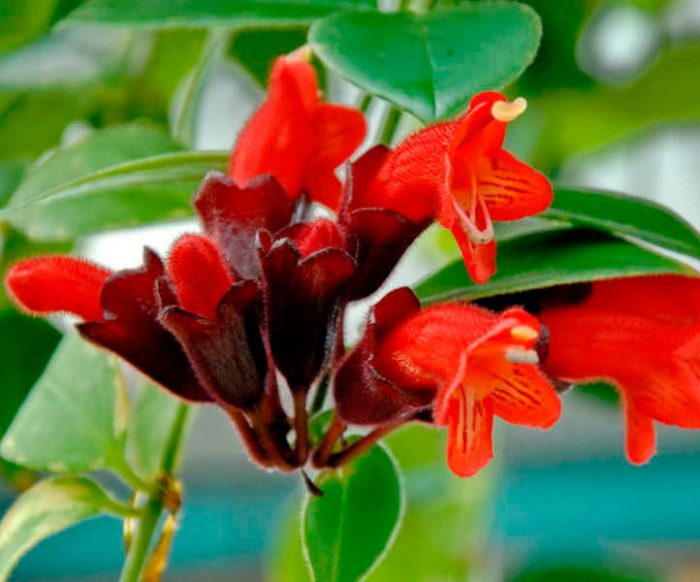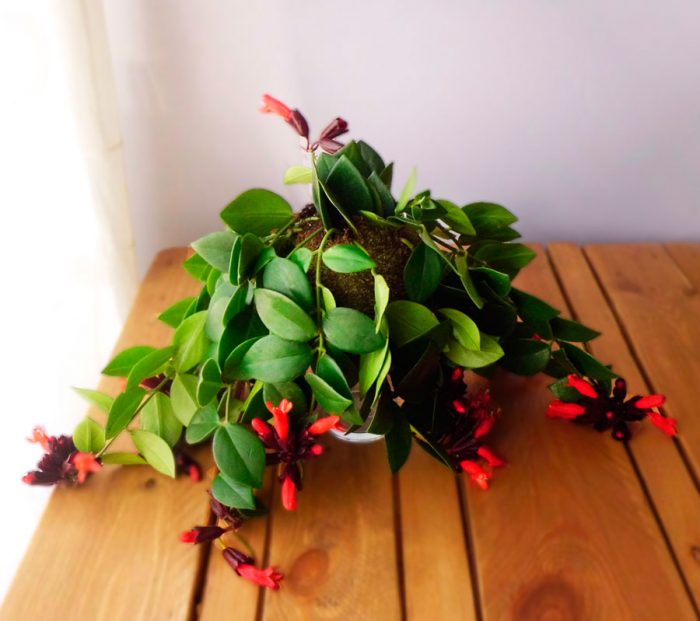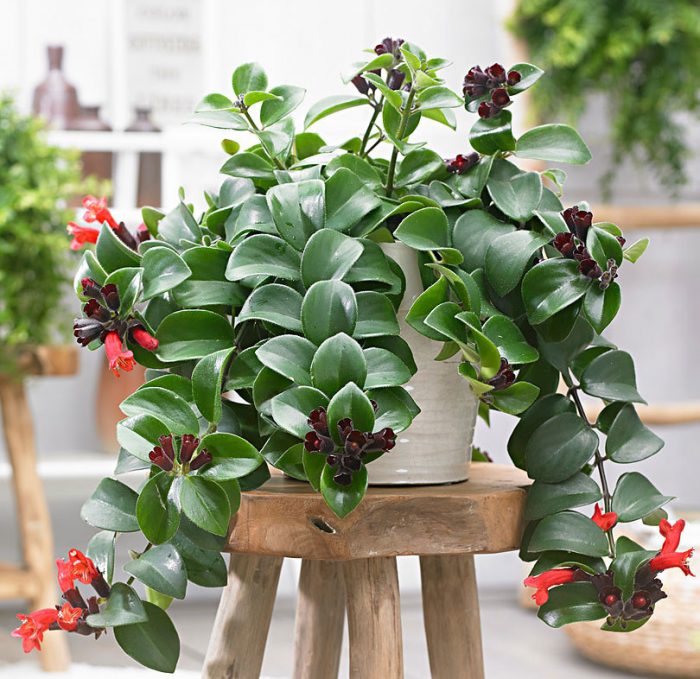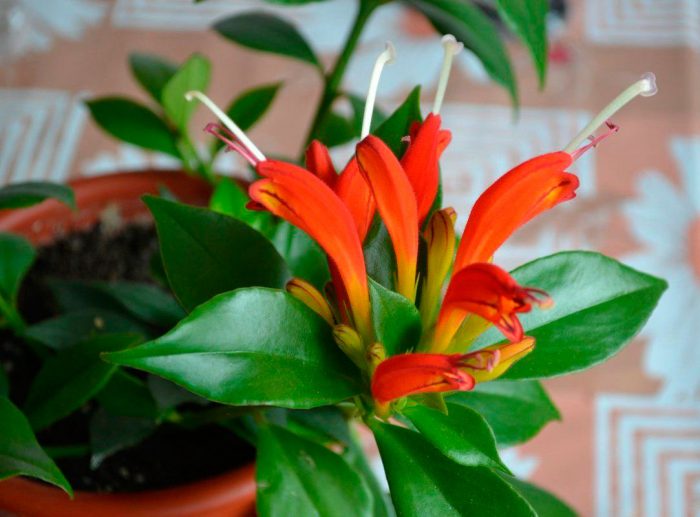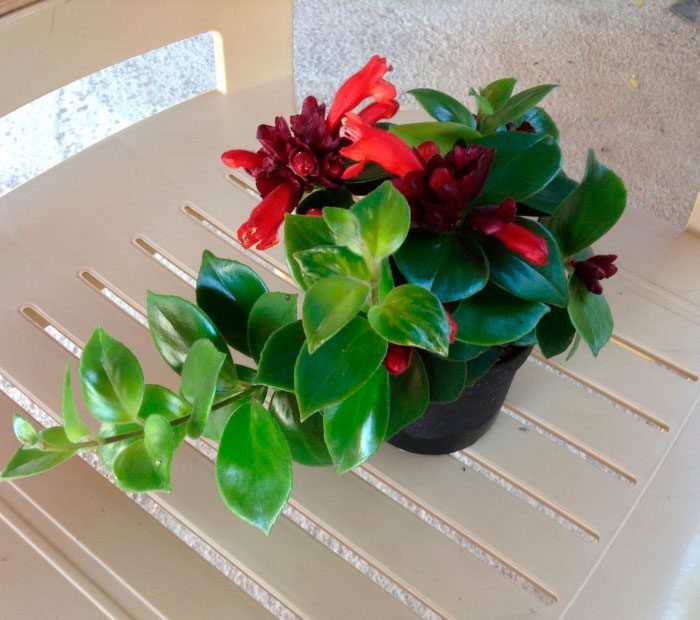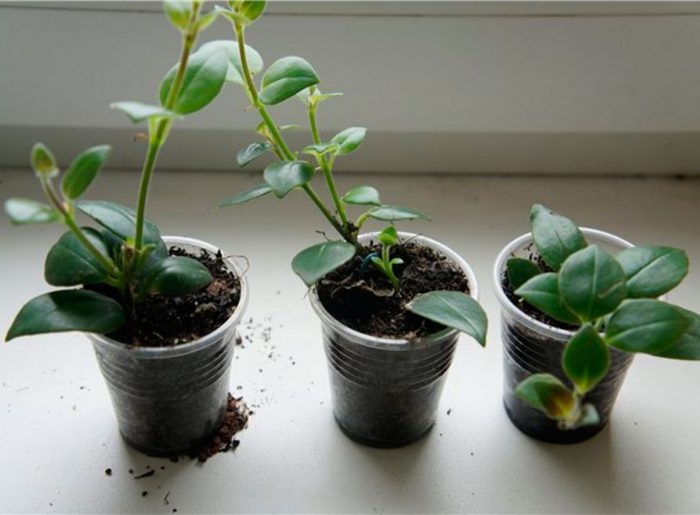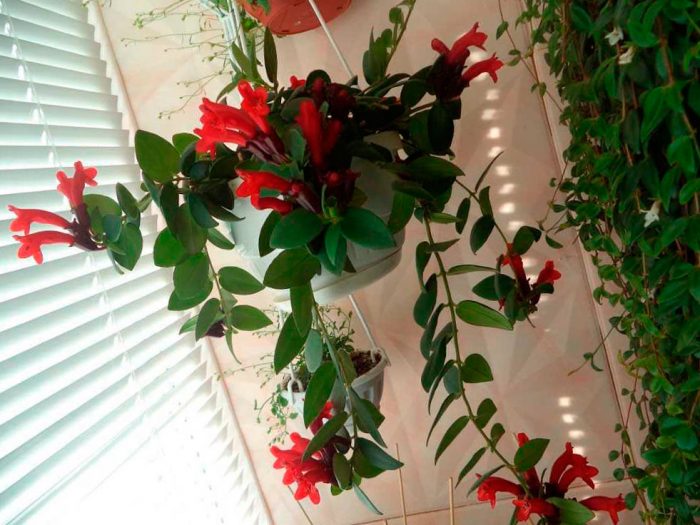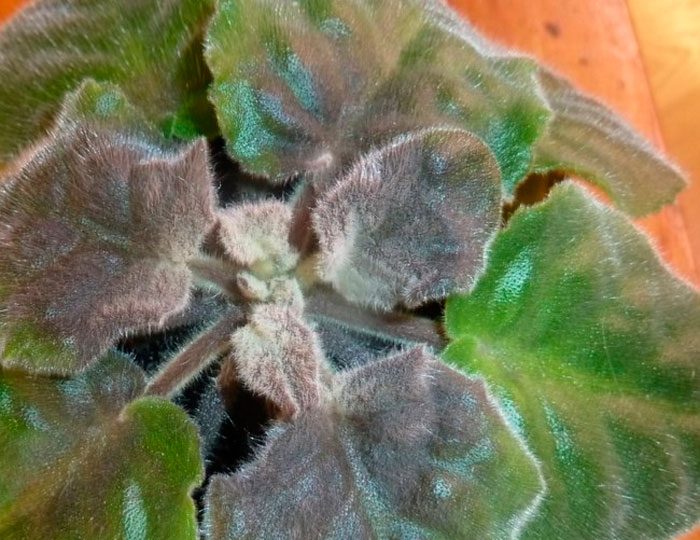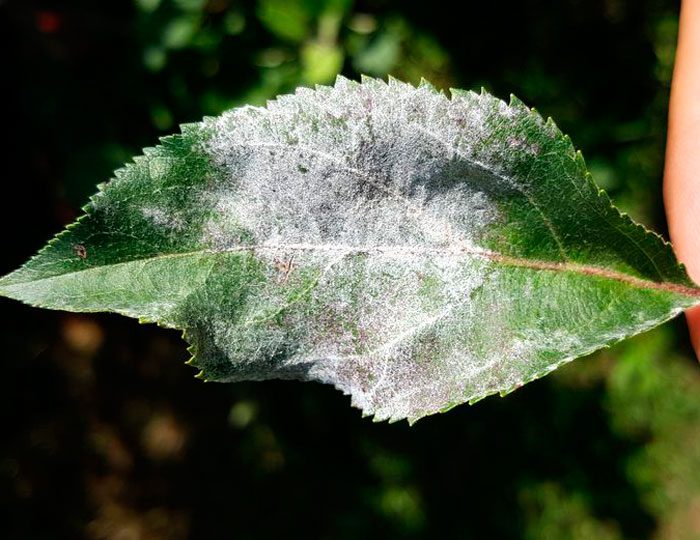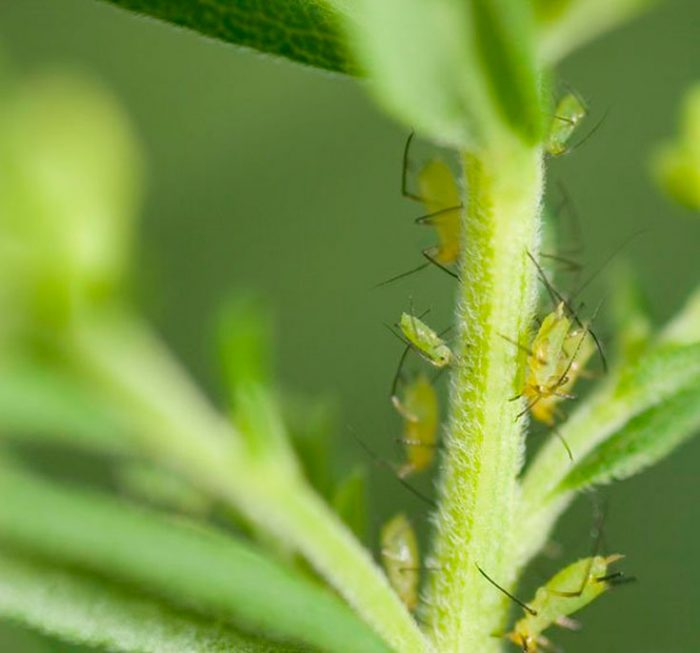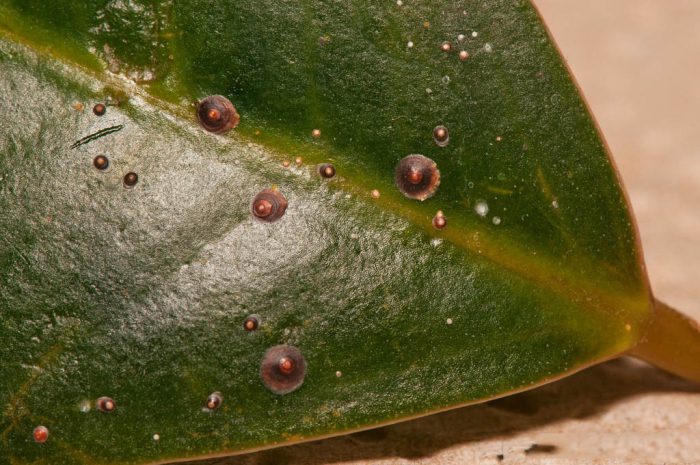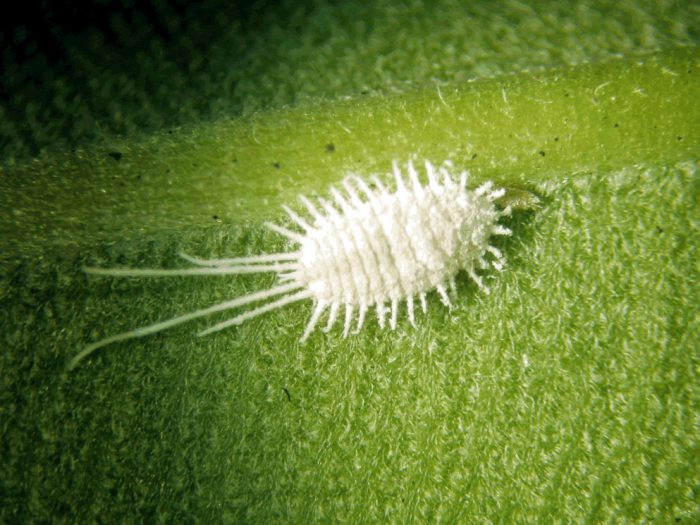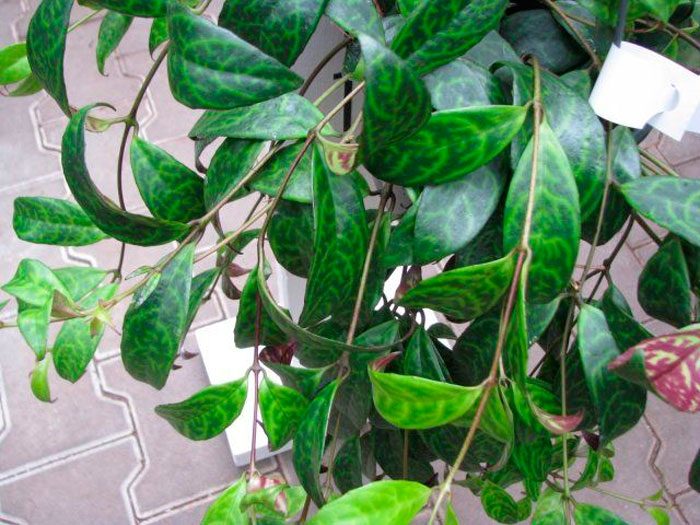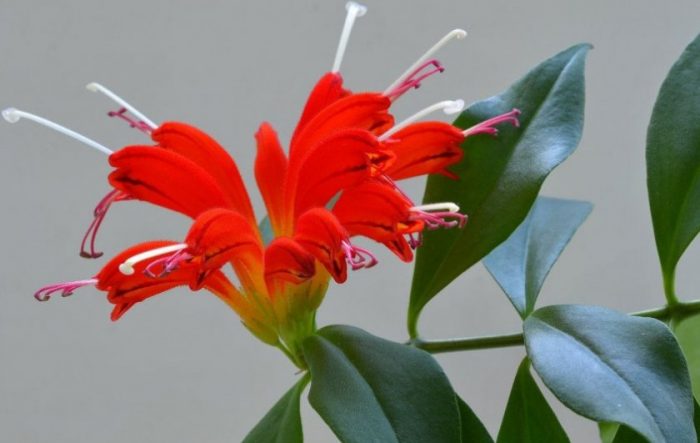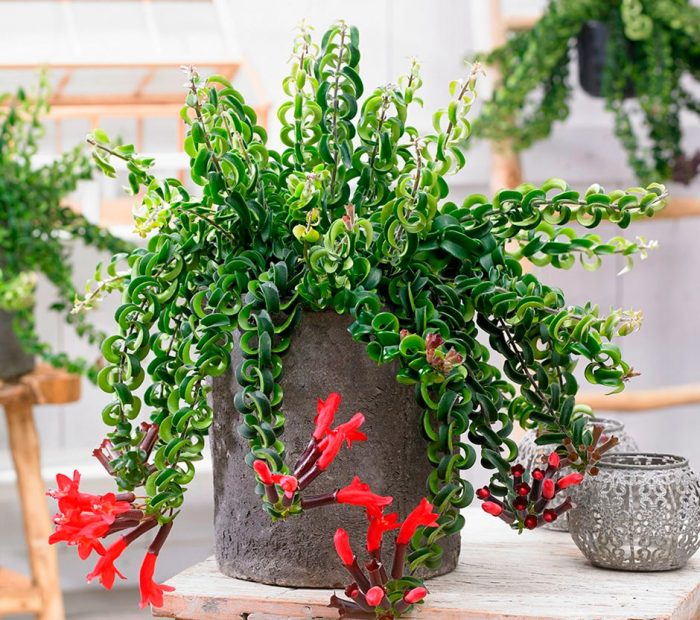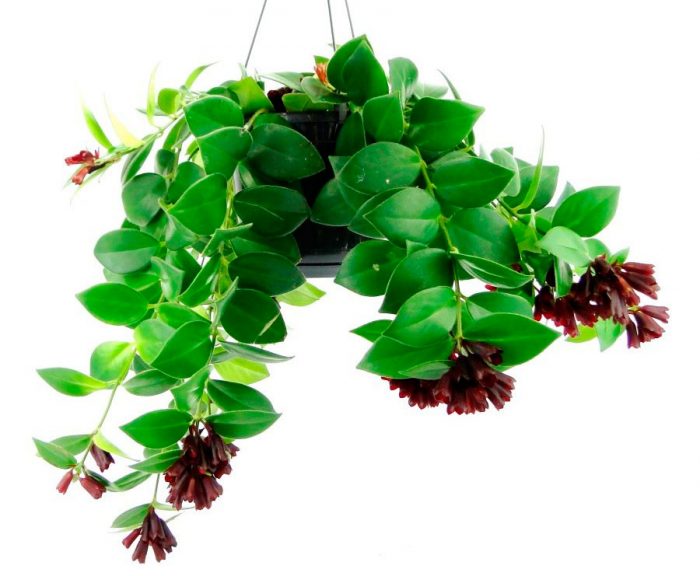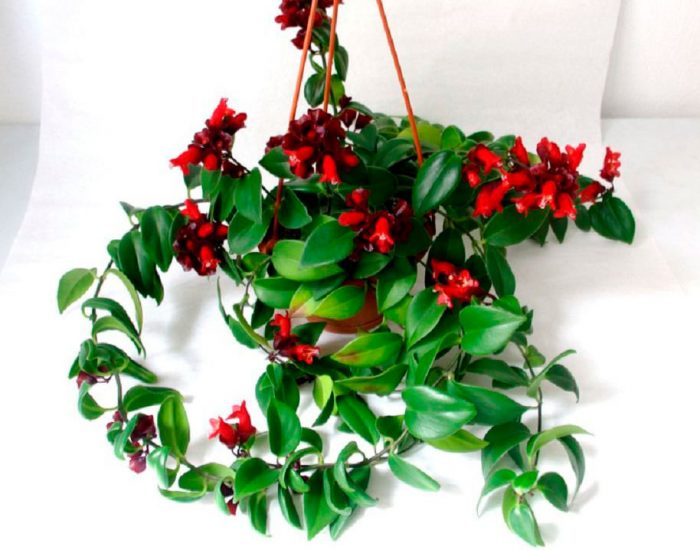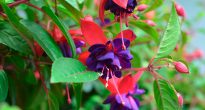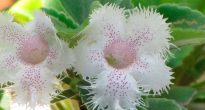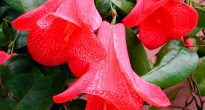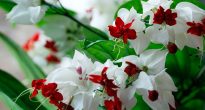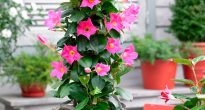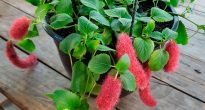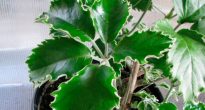The Aeschinanthus plant is a member of the Gesneriaceae family. The name comes from the ancient Greek word and translates as "distorted flower". This plant is often called "fondant flower" among the people. These names are due to the fact that the escinanthus has richly colored flowers that have an extremely unusual inverted shape.
Content
Eschinanthus features
Aeschinanthus is an epiphytic plant growing on tree trunks, forophytes. However, the plant does not feed on the phorophyte on which it grows. It comes from the forests of Southeast and South Asia: Indochina, India and China. Evergreen branches can vary in length from 0.3 to 0.9 meters. Among the species of this genus, there are specimens represented by dwarf shrubs or hanging climbing branches. In natural conditions, the flowers of this plant are pollinated by sunbirds with a thin and long beak. Branches are decorated with short-peaked fleshy leaf plates.
Aeschinanthus has become very popular among flower growers due to its spectacular rich green foliage, as well as beautiful orange or red flowers. The shape of the leaf plates is oval, while their top is pointed, they reach about 40 mm in width and about 100 mm in length. Peduncles form at the tips of the branches, on which racemose inflorescences are formed. The color of the tube gradually changes, at the base it is colored yellow, and the edges of the petals are red. The opened flower is decorated with a white ovary tube that protrudes from the middle.
Aeschinanthus care at home
Before decorating your home with eschinanthus, you need to learn how to properly care for it, while you should take into account that it is not so easy to grow it indoors, and even more so to get it to bloom. In order for it to grow and develop normally, it needs certain conditions.
You can decorate with such a flower both a living room and an office. In order to get a lush bush with hanging branches, several cuttings must be planted in one container at once. Eschinanthus looks spectacular in a hanging planter.In order for it to bloom regularly, it needs to be properly cared for and optimal conditions for growth.
Illumination
For a flower, you should choose a well-lit place, protected from direct sunlight. Window sills located in the western or eastern part of the room are perfect for this. If there is space only on the southern window, then the plant must be shaded from the direct rays of the sun with a thin curtain, otherwise burns will form on the surface of the foliage. It is impossible to put it on the northern windowsill, as it may not bloom due to poor lighting. The room where the plant is located should be systematically ventilated, but do not forget to protect it from drafts.
Temperature regime
In order for the bush to be lush and bloom profusely, it should be protected from sudden temperature changes. It grows best at an air temperature of 20-25 degrees. In order to see spectacular flowering in spring, with the onset of autumn, the bush is rearranged to a cooler (from 15 to 18 degrees) and well-lit place. Make sure that the room is not colder than 15 degrees, otherwise foliage will begin to fly from the bush. If everything is done correctly, then in the last winter or first spring weeks, buds will form on the escinanthus. As soon as this happens, you can gradually increase the air temperature in the room to 20-25 degrees.
Watering
In caring for such a plant, it is very important to water it correctly and maintain optimal air humidity. Watering is carried out only after the top layer of the substrate in the pot dries out a few centimeters deep. Some time after watering, the excess liquid drained into the pan must be poured out. In the event that the earthen lump dries up completely, flowers and buds will begin to fly around the flower. With a cool winter, watering should be less frequent than in the warm season. Make sure that there is no stagnation of liquid in the soil mixture, as this leads to yellowing and foliage flying around. Water and moisten the bush with well-settled soft water at room temperature. To soften hard water, mix it with a few drops of lemon juice.
Air humidity
Aeschinanthus foliage can accumulate water in itself, therefore, low humidity in the room is not terrible for it. However, in the summer it is recommended to systematically moisten it with a sprayer 1-2 times a day, while trying to prevent water drops from falling on the flowers. To moisturize the plant, use well-settled lukewarm water. In the warm season, if necessary, he can arrange a warm shower. In the winter season, you do not need to spray the bush. But if the humidity level is very low, the flower pot can be placed on a pallet filled with wet expanded clay.
Fertilizer
In the spring-summer period, the bushes must be regularly fed. For this, it is recommended to use fertilizer for flowering plants, while taking half the dose recommended by the manufacturer. Top dressing is carried out 1 time in 7 days, while the fertilizer is applied to the substrate along with watering.
Pruning
As the bush grows and develops, the foliage in its upper part begins to fly around, which negatively affects its appearance. In this regard, it should be systematically cut off, and this can be done either before or after flowering. To do this, you need to cut off the long stems by 1/3 of their length, and also remove all the dried leaves. If desired, you can regularly pinch the tops of the stems.
Aeschinanthus transplant
The plant is transplanted carefully using the transshipment method. Do this before it blooms or after flowering. When choosing a new container, you need to take into account that it should be 20 mm larger in diameter than the old one. In order to prevent the liquid from stagnating in the pot, a good drainage layer is made at its bottom.
While the bush is young, it is transplanted annually, an older plant is subjected to this procedure only if necessary (when the roots begin to look out of the drainage holes). The flower grows beautifully and blooms magnificently in cramped pots.
Substrate
For planting a flower, a loose soil mixture is used that allows water and air to pass through, and is also saturated with nutrients. To do this, you can use a commercially available universal soil mixture, in which vermiculite, perlite or small expanded clay are added for greater looseness. You can also make the substrate with your own hands, for this they combine peat, sphagnum, river sand and leafy soil in a ratio of 2: 1: 1: 2. In this soil mixture, the root system will receive the required amount of oxygen, while sphagnum will prevent rot on the roots. If desired, a small amount of crushed bark, coconut fiber or charcoal can be added to the finished substrate. A suitable pot for planting should be low but wide.
Reproduction methods
Over the years, Aeschinanthus loses its decorative effect, so it needs to be systematically updated. As a rule, the life span of such a plant does not exceed 3-5 years, after which it is destroyed, and a new bush is put in its place.
Propagation by stem and leaf cuttings
Most flower growers prefer to propagate escinanthus by cuttings. For this, you can use both leaf and stem cuttings.
To obtain stem cuttings, cut off the top of the stem about 10 centimeters long. There should be 5 or 6 knots on the handle. Cutting is carried out before the buds are laid and flowering, or when the growing season ends. Remove all the lower leaf plates from the segments, and then place them for rooting in a container with water or immediately plant them in a soil mixture consisting of sand and peat. From above, the cuttings are covered with a plastic bag or they can be planted in a mini-greenhouse with a bottom heating. In order for the cuttings to take root faster, they will need treatment with Kornevin, or, in extreme cases, sprinkle them with charcoal powder for disinfection. They root best in warmth (about 25 degrees). The roots should form after 15–20 days.
In order to propagate eschinantus with leaf cuttings, you need to cut off the leaf plate along with the bud. After that, the cut is processed and the cutting is planted in a container filled with a substrate for rooting; on top it must be covered with a glass jar or a transparent bag. After rooting, the cuttings are transplanted into individual pots. To get a more lush bush, several cuttings can be planted in one container at once. At the bottom of the pot, a good drainage layer must be made; for this, broken shards or expanded clay are used. After planting, the surface of the substrate is covered with a thin layer of sand. It is necessary to use a soil mixture consisting of turf and peat soil, as well as pure river sand (1: 1: 1).


Watch this video on YouTube
Growing from seeds
Less popular among florists is the cultivation of aeschinanthus from seeds. There are very small seeds inside the ripe capsule. To begin with, they are shaken out on a piece of paper, after which they are sown in a container filled with a substrate. For this, the seeds are evenly distributed on its surface, the crops are covered with a film (glass) on top. To moisten them, use the method of bottom irrigation through the pan. When the seedlings grow up, they are transplanted into small pots. Already next year, young plants will bloom.
Diseases and pests
As a rule, eschinanthus is sick and harmful insects settle on it only if it is improperly looked after. Below will be described the most common problems that arise for growers when growing such a flower.
Possible problems
- Falling foliage (in the autumn-winter period)... Make sure that the room is not colder than 15 degrees, as this can lead to leaves flying around. It can also fall off in the summer when the earthen coma is overdried, the roots are injured, or if the bush has been exposed to a draft. The first step is to start watering the plant properly. If the stems are very bare, then they need to be cut off, and cover the bush on top with a bag for a while.
- Lack of flowering... Most often, the bush refuses to bloom due to the warm wintering (the air temperature was above 16-18 degrees). The flower should be kept cool in winter for at least four weeks.
- Darkening and flying around flowers... The flowers darken and crumble if the bush is moved to another place, due to excessively low humidity in the room, or if water droplets get on them while the plant is moistened. To correct the situation, you need to eliminate the existing shortcomings in care.
- Brownish specks appear on foliage... This is due to the fact that the flower is watered with excessively cold water. Remember that its temperature should be close to room temperature (at least 20 degrees).
- The tips of the leaf plates turn yellow and dry... The room is very hot and at the same time extremely low humidity. It is enough to correct mistakes in care, and the situation will return to normal.
- The leaves turn black... Liquid stagnates in the substrate. Wait until the top layer of potting soil dries out before watering the bush.
- Curling foliage. Very dry air or the plant is close to the heater. In the summer, the flower must be moistened with a sprayer.
Gray rot
The foliage and stems develop specks and become soft. The development of the disease is facilitated by the stagnation of liquid in the soil mixture, low air temperature or a draft. Spray the flower with Fundazole and correct all the shortcomings in caring for it.
Powdery mildew
A white bloom forms on the foliage, after which it begins to dry and fly around. The development of the disease occurs in a cool room with high humidity. At the initial stage of the development of the disease, the plant can be sprayed with a solution of potassium permanganate (2.5 grams per bucket of water). If the plant is very badly affected, then all the affected leaves are cut off from it, and then it is sprayed with a solution of Topaz or Vectra (be sure to follow the instructions on the package). For preventive purposes, eschinanthus is sprayed with a solution consisting of 1 liter of water, 4 grams of soap and 5 grams of soda ash.
Aphid
The appearance of such a small pest leads to the fact that the foliage turns yellow and flies around. If there are few aphids, then laundry soap can be used to treat the plant. Black bitter pepper extract is also suitable for this. To do this, half a kilogram of fresh or 200 grams of dried pepper is crushed and mixed with a small amount of water. Bring the mixture to a boil and keep it on low heat for 1 hour. After 24 hours, the broth is filtered and poured into jars or glass bottles, which are tightly closed. For storage, the product is removed in a dark place. To process a flower from aphids, a solution is prepared; for this, 1 liter of water, 5 grams of soap and 10 grams of pepper extract are combined. From chemicals, you can use Fitoverm or Akarin.
Shield
If the scale insect has settled on the eschinanthus, then brownish tubercles form on its shoots and foliage. Over time, yellowing and drying of the leaves begins. If there are few pests, then the plant is treated with garlic infusion, for its preparation, combine 1 tsp. chopped garlic with half a liter of water. The infusion will be ready after knocking, it will only be necessary to strain it. If this treatment is not effective enough, then spray the flower with Aktara. If necessary, spraying is carried out several times.
Mealybug
On a pest-infected bush in the leaf sinuses and on the stems, a plaque is formed that looks similar to cotton wool. The flower begins to fade and may even die. As soon as the first signs of the appearance of pests are noticed, the plant is wiped with a cotton swab moistened with alcohol or a solution of laundry soap. If there are many pests, then the bush is sprayed with Aktara.
For preventive purposes, in order to prevent harmful insects from appearing on the flower, it can be systematically treated with a special solution; for its preparation, 1 liter of water is combined with 10 drops of eucalyptus oil. Remember that it is impossible to get rid of pests after one treatment with chemicals or folk remedies. You need to spray the bush 3-4 times with a break of 1-1.5 weeks.


Watch this video on YouTube
Types and varieties of eschinanthus with photos and names
In the wild, you can meet about 200 species of Aeschinanthus, but only about 15 species are grown at home. Below will be described those species and varieties that are most popular with flower growers.
Eschinanthus marble
This species has spectacular foliage, the surface of which is decorated with white streaks. The seamy surface of the leaf plates is painted in chestnut color, they reach about 10 cm in length. The bush looks great in a hanging planter. The flowers are nondescript and have no decorative value. Their green tubes, on the surface of which there are brown spots, do not look very impressive against the background of bright foliage.
Aeschinantus the beautiful
This plant is most popular with flower growers. This dwarf shrub has stems reaching about 50 centimeters in length. The length of the fleshy oblong leaf plates is from 10 to 12 centimeters. They have an emerald color, and against their background, red flowers look very impressive. Flowers at the tops of branches are collected in 10-12 pieces in racemose inflorescences. The orange-red corolla has a tube, ending in a bend, which is divided into 5 parts, similar in appearance to the lobes. On each of the limbs there is a brownish-red speck, shaped like a crescent.
Aeschinantus the Beautiful
Some growers consider Aeschinanthus beautiful and Aeschinanthus beautiful to be the same species. However, these plants have significant differences. Aeschinanthus has beautifully slightly smaller foliage and a red border runs along the edge. The stems are also pale red. The diameter of a deep red flower is about 60 mm, while the throat of the corolla has a pale pink color.
Eschinanthus Twister
This spectacular plant has unusual twisted stems and foliage. Outwardly, they look like beautiful curls. Its glossy waxy leaf plates are dark green. The flowers are reddish-orange in color and grow on the tops of the branches and in the leaf axils.
Eschinantus Mona Lisa
This plant differs from those listed above in that it is much easier to grow it at home, since it is undemanding in care. On the hanging branches are dark green leaves with a well-visible median vein. At the tops of the stems, dense racemose inflorescences are formed, consisting of deep red flowers.
Aeschinanthus Lobba
Originally view from the island of Java. On flexible pale red stems there are small oval leaves of a dark green color, their seamy surface is painted in a paler shade. At the tops of the stems during flowering, brushes are formed, consisting of deep red flowers with a yellow tube.
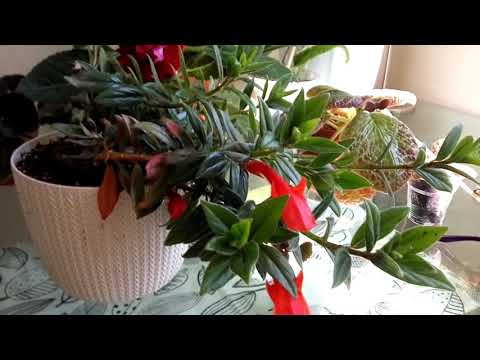

Watch this video on YouTube

